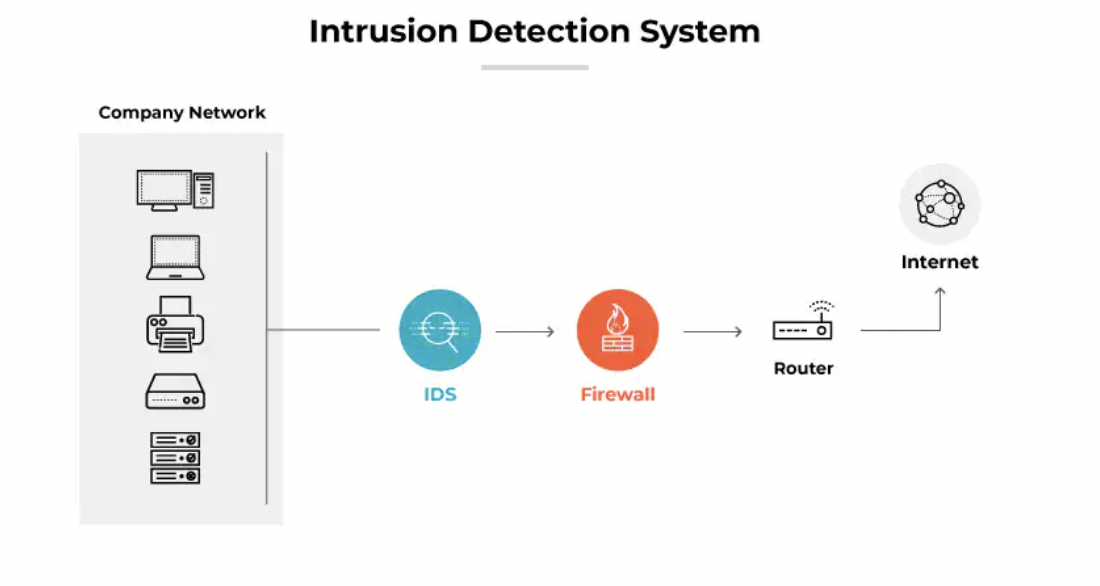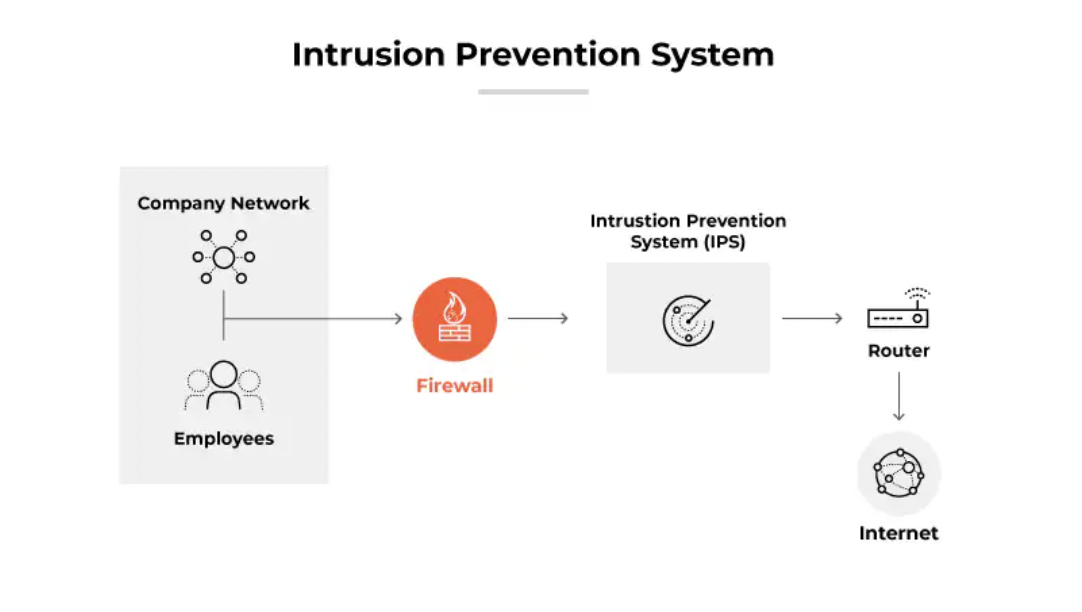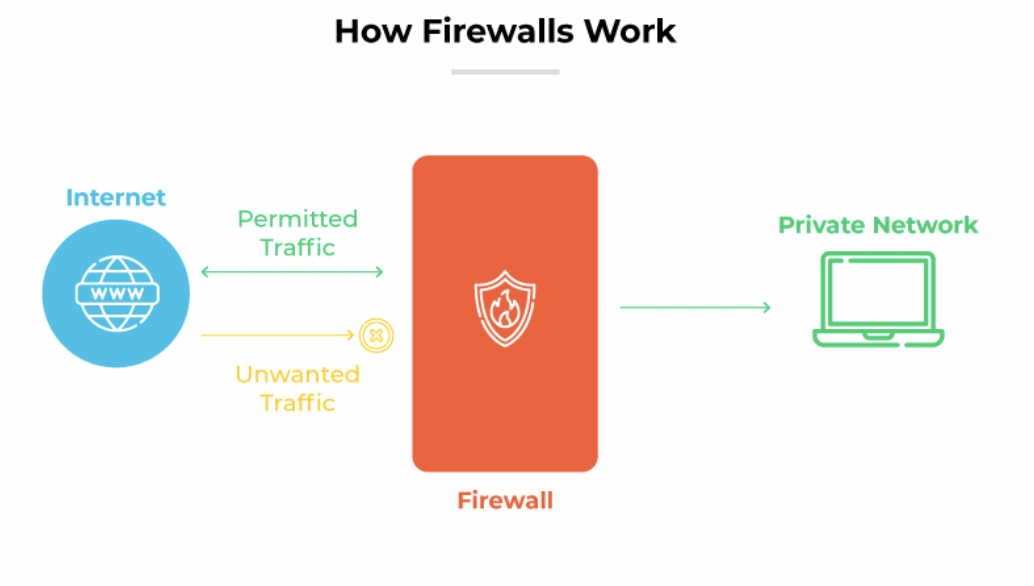IPS vs. IDS vs. Firewall: Key Differences Explained & How to Choose the Right Security Solution
Understanding the Key Differences: Firewall, IPS, and IDS
-
Firewall: Filters and controls incoming and outgoing network traffic based on predefined security rules, acting as a barrier between trusted and untrusted networks.
-
Intrusion Prevention System (IPS): Actively blocks and prevents threats in real-time by analyzing network traffic and taking action to stop malicious activities.
-
Intrusion Detection System (IDS): Monitors network traffic and identifies potential security breaches, providing alerts without taking direct action to stop the threats.
Firewall
A firewall serves as a protective barrier between your network and the outside world. It inspects and controls traffic based on predefined security rules, deciding what data gets in and what stays out. Positioned at the edge of your network, a firewall ensures that only safe data passes through, blocking unauthorized access and protecting against external threats.
● Function: Inspects and regulates traffic.
● Position: At the network’s edge.
● Operation: Allows or blocks traffic based on rules.
Intrusion Detection System (IDS)
An IDS continuously monitors network traffic, scanning for suspicious activities without blocking any data. When something unusual is detected, it sends an alert. IDS systems typically duplicate traffic for analysis, ensuring they don’t interfere with your network’s performance.
● Function: Monitors traffic for suspicious activities.
● Position: Outside the main traffic flow.
● Operation: Alerts on anomalies without interfering.

Intrusion Prevention System (IPS)
An IPS goes beyond detection by actively blocking threats in real-time. Positioned directly in the traffic path, it analyzes and stops malicious activities before they can cause harm. IPS systems are often placed just after the firewall to catch any threats that may slip through.
● Function: Detects and prevents threats.
● Position: Inline with traffic flow, after the firewall.
● Operation: Blocks malicious activities in real-time.

Comparing Firewall, IDS, and IPS
|
Feature |
Firewall |
IDS |
IPS |
|
Purpose |
Filters traffic based on rules |
Monitors for suspicious actions |
Inspects and blocks threats |
|
Operation |
Blocks or allows traffic |
Observes traffic and alerts |
Examines and stops threats |
|
Position |
At the network’s edge |
After the firewall |
Inline with traffic, after the firewall |
|
Response |
Blocks unauthorized traffic |
Alerts on suspicious activities |
Blocks malicious actions |
Common Features and Working Together
Shared Goals
● Security: All aim to protect against threats and unauthorized access.
● Policy Management: Managed through set rules and policies.
● Versatility: Can be used in various environments (on-premises, cloud, etc.).
● Threat Detection: All help detect and prevent threats.
Working Together
Firewalls, IDS, and IPS can work together to create a stronger security setup. The firewall handles initial traffic filtering, while the IDS (Intrusion Detection System) analyzes traffic and alerts on potential threats. The IPS (Intrusion Prevention System) actively blocks detected threats in real-time. This layered approach ensures that even if something slips past the firewall, the IDS and IPS can catch it, providing comprehensive protection for your network.
Conclusion
Understanding the differences between firewalls, IDS, and IPS is crucial for implementing a robust cybersecurity strategy. Investing in a comprehensive cybersecurity solution that integrates these technologies can significantly enhance your business’s defense mechanisms. This integration helps keep sensitive information safe and maintains customer trust.
References:
1. Reference article and images: IPS. vs. IDS vs. Firewall: What Are the Differences? – Palo Alto Networks
This article was written by Andre Martinez who is currently doing his externship with Up Front Connection, as part of our collaboration with Delete the Divide, an initiative led by the County of Los Angeles to advance digital equity in underserved communities through partnerships, infrastructure investments, and technology resources that empower residents and small businesses.
Andre Martinez is a dedicated Cyber Security Analyst passionate about learning and applying new concepts.. He thrives in dynamic environments where he can make impactful contributions. He has a background in Web Development and Cyber Security.



